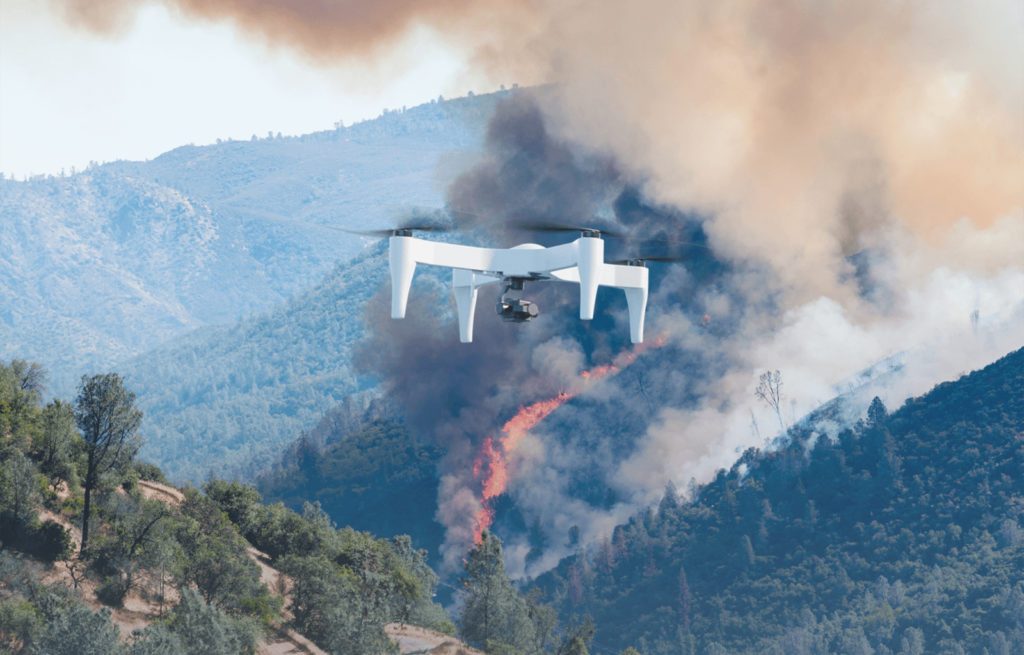It turns out that we’ve been doing this aviation thing wrong the whole time. Instead of designing a lightweight drone capable of carrying a battery and a useful payload, we should have been developing batteries that can fly.
That’s the conclusion that acted as the starting point for Impossible Aerospace, a California startup fresh out of stealth mode and ready to shake up the drone industry.
So what’s the big deal? Well, the company’s first product – the US-1 – promises a huge 2 hours of flight time on a single charge. Because the drone’s battery cells are spread around its body, it’s essentially a flying battery rather than the traditional quadcopter designs we are used to from DJI and the rest.
The result is a flight time well beyond the 30-minutes or so that has become the industry standard.
Impossible Aerospace also announced its takeoff from stealth mode a $9.4 million Series A funding round led by Bessemer Venture Partners. The latest round brings the total amount raised by Impossible Aerospace to over $11 million.

A battery-first approach
The US-1’s “battery-first approach” has enabled it to compete in terms of flight time with gasoline-powered drone hybrids. Units are already on sale with optical and thermal cameras, according to the company, who are aiming to target firefighters, police departments, and search and rescue teams across the US.
“The US-1 is more than just a drone. It’s the first aircraft designed properly from the ground up to be electric, using existing battery cells without compromise,” said Spencer Gore, CEO of Impossible Aerospace.
“It’s not so much an aircraft as it is a flying battery, leveraging an energy source that doubles as its primary structure. This is how electric aircraft must be built if they are to compete with conventional designs and displace petroleum fuels in aviation.”
Read more: Drones, Data and Security: DJI’s Mario Rebello Meets the Issue Head On at InterDrone
The US drone hardware resurgence?
At Interdrone last week, 3DR partnered with Yuneec to launch a new company dedicated to providing solutions to US Government agencies. Another California company, Skydio, released an SDK that could be the first step toward the highly-capable R1 becoming a popular commercial drone.
Both moves are important markers for two reasons. On the one hand, 3DR’s play highlights the demand for US-based drone solutions for sensitive operations, amid growing skepticism – rightly or wrongly – over how safe data is in the hands of DJI.
On the other hand, Skydio’s developments show that drone innovation is alive and well in the US, despite the hardware market domination of its rivals in China.
This latest product launch from Impossible Aerospace ticks both of those boxes: This is clearly an innovative company ready to push the boundaries with a concept that hasn’t been seen before.
And on top of that, Impossible Aerospace isn’t afraid to play the patriot card. Aside from the drone’s name, their own press release frames the US-1 as a necessary domestic alternative to Chinese technology.
“From both a cost and environmental standpoint, the future of aviation is electric,” said Greg Reichow of Eclipse Ventures.
“We invested in Impossible Aerospace because of their thoughtful and systematic approach to re-thinking the fundamentals of electric aircraft. Our first product, the US-1, outperforms existing solutions in a market crying out for reliable, domestically-manufactured long-duration aircraft, while validating the technology required to build aircraft of the future.”
Malek Murison is a freelance writer and editor with a passion for tech trends and innovation. He handles product reviews, major releases and keeps an eye on the enthusiast market for DroneLife.
Email Malek
Twitter:@malekmurison
Subscribe to DroneLife here.







[…] Aerospace made big news when it first began exhibiting a couple of years ago. The company was started by Spencer Gore, a […]